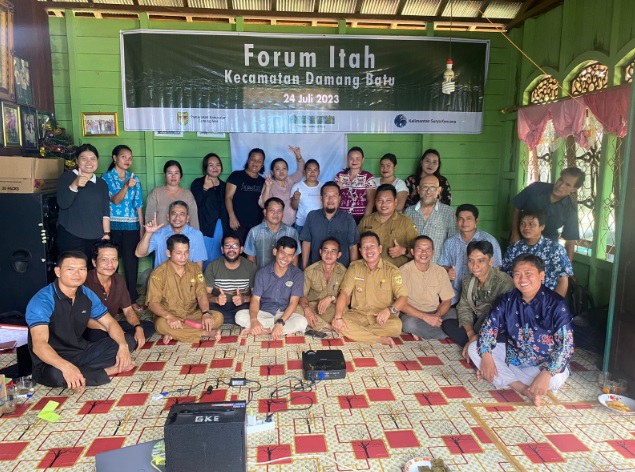Forest Inventory with Hkm Marikoi Hapakat

On May 5-10, 2025, YTS, together with technical experts and members of the HKm Marikoi Hapakat social forestry group, carried out a full forest inventory in the village forest area. A total of 41 participants joined the activity. They were divided into several teams of six to seven people, with two teams specifically assigned to conduct vegetation surveys.
The inventory used a quadrat sampling method to assess the composition and structure of vegetation. Observation plots were adjusted according to plant growth stages. Trees with a stem diameter greater than 10 cm were recorded in 20 x 20 meter plots. Plants with diameters between 5 and 10 cm were recorded in 10 x 10 meter plots. Those with diameters of 2 to 5 cm were recorded in 5 x 5 meter plots. Seedlings or young plants under 2 cm in diameter were recorded in 2 x 2 meter plots.
Within each plot, participants identified plant species, measured stem diameters at breast height (DBH), recorded tree heights using a clinometer, and collected data on species density and dominance. The data were then analyzed using the Shannon-Wiener diversity index and vegetation density index to better understand the forest’s ecological condition.
This activity aimed to help the community understand the natural resource potential and vegetation diversity within their forest area. For the social forestry group, the inventory also serves as a critical baseline for developing the Simple Forest Management Plan (RKPS) and Annual Work Plan (RKT), and for mapping natural resources using field data.
Once the inventory process is completed, the next steps include developing forest zoning for protection and utilization areas, documenting land-use contributions within the community, and finalizing the RKPS and RKT for the HKm Marikoi Hapakat group.

In carrying out the inventory for animals in the village forest of Marikoi Hapakat on 5-9 May, three teams were formed for each category: mammals, birds and herpetofauna. The survey teams walked along a transect for 1-2 km, looking for any signs of animals they encountered along the way.
For mammals and birds, in the daytime they would record their tracks, calls, nests and any signs of their presence and use binoculars to get a visual confirmation. The inventory for reptiles and amphibians was done at night, as most snakes and frogs in this area are nocturnal. The survey team specifically looked in rocky areas, shrubs, moist areas and leaf littter, places where you would find herpetofauna. Data collection was carried out, where the specimen is caught, photographed, identified and released.
The results of the inventory are as follows:
Bird species: 31
Mammal species: 8
Reptile species: 11
Amphibian species: 16
This data is important to determine how the forest will be managed and how it will be zoned.




